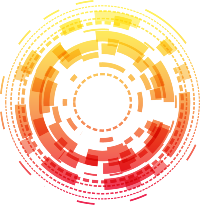In an era where technology increasingly intertwines with our daily lives, the evolution of home automation offers not just convenience but real solutions to age-old problems. Take, for example, the innovative developments in pet safety and management. The concept of integrating computer vision with household devices exemplifies how smart tech can elevate safety standards for our furry companions. A remarkable example is a camera-equipped cat flap capable of identifying and intercepting animals or objects that might pose a problem or threaten the household’s cleanliness. This device doesn’t merely alert owners—it actively filters intrusions, ensuring that unwanted guests like rodents or large frogs don’t make their way indoors. Such innovations demonstrate how combining AI with common household utilities can redefine pet management, turning what was once manual monitoring into an automated, intelligent process.
What makes this technology particularly compelling isn’t just its convenience but its nuanced understanding of animal behavior. Instead of blindly restricting access, it analyzes what the cat carries—be it a rat or a frog—and responds accordingly. Owners are kept informed with video feeds and notifications, which effectively transform the home into a secure environment where technology acts as a vigilant guardian. This paradigm shift toward smarter pet control is a telltale sign that the future of home tech isn’t just about automation but about creating meaningful, safety-enhancing solutions that bring peace of mind.
The Unexpected Champions of Comfort: High-Tech Fabrics for Active Lifestyles
Moving from the digital to the material realm, the spotlight now turns to a simple yet revolutionary staple: merino wool T-shirts. While at first glance, clothing might seem mundane compared to cutting-edge gadgets, merino wool’s properties challenge that notion. Particularly for outdoor enthusiasts and those engaged in physically demanding activities, this fabric represents a significant upgrade in comfort and functionality.
Many would assume wool’s reputation for warmth and bulkiness, but merino wool flips that idea on its head. The fabric’s natural breathability and moisture-wicking capabilities make it ideal for hot, humid conditions—think hiking, canoeing, or even just enduring mid-September summer heat in San Francisco. Unlike synthetic alternatives, merino wool possesses antimicrobial properties, reducing odor and negating the need for constant washing. This means you can stay fresh longer, a boon for travelers or adventurers who rely on lightweight, durable gear.
The value of such clothing lies in its blend of simplicity and science-backed performance. It’s a reminder that sometimes, the most profound innovation isn’t about complex gadgets but about improving everyday essentials through better understanding of materials. As outdoor activities become more popular and health-conscious lifestyles take hold, investing in high-quality, functional clothing like merino wool T-shirts isn’t just a fad; it’s a strategic choice for comfort, sustainability, and efficiency.
The Intersection of Practicality and Sustainability
Both the smart pet technology and merino wool clothing serve as examples of how innovation can seamlessly align with sustainable and practical living. The former reduces unnecessary waste—preventing animals from bringing in potentially harmful or disruptive elements—while the latter emphasizes durability and eco-friendliness. Merino wool, a natural fiber, offers an alternative to synthetic fabrics, which often rely on environmentally taxing manufacturing processes.
This synergy between technology and sustainability underscores a larger cultural shift: a desire to live smarter, not just faster. People are increasingly investing in products that address specific needs—be it home safety or personal comfort—while also minimizing environmental impact. The modern consumer isn’t satisfied with superficial fixes; they seek solutions that are innovative, effective, and aligned with environmental values.
Such a mindset fosters a future where daily living is not at odds with ecological responsibility. Whether through advanced home devices or high-performance fabrics, these choices exemplify a deeper understanding that innovation should serve both human needs and the planet’s health. The combination of these elements suggests a broader movement toward conscious, thoughtful living—where technology and sustainability go hand in hand to improve the quality of life in meaningful ways.

